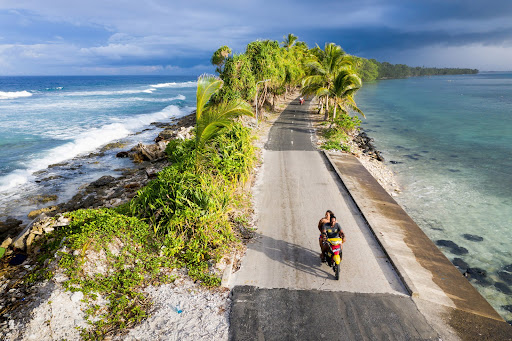Tuvalu: The World’s Latest Climate Refugees
January 30, 2022
Tuvalu, an island nation in the western Pacific ocean, is in trouble. It is only 6 feet above sea level, with its highest point being 15 feet above sea level. With the oceans rising roughly 0.2 inches annually, the coastline of Tuvalu is already being eroded. Islanders already are forced to move inland for certain seasons, due to their homes closer to the coast being completely flooded. In a widely published event, the foreign minister of Tuvalu, Simon Kofe, addressed the United Nations climate conference in Glasgow while standing knee deep in water in a suit and tie. When asked about the thought behind this display, Kofe told CNN, “The statement juxtaposes the COP26 setting with the real-life situations faced in Tuvalu due to the impacts of climate change and sea level rise and highlights the bold action Tuvalu is taking to address the very pressing issues of human mobility under climate change.”
Heat-filled days make it difficult for certain residents to breathe properly, while the sea slowly drags more sand away and inches ever closer to the homes and lives of the people. Leitu Frank, a Tuvaluan housewife told the Guardian that, “Before, the sand used to stretch out far, and when we swam we could see the sea floor, and the coral. Now, it is cloudy all the time, and the coral is dead. Tuvalu is sinking.” During storms, waves pound the island from all sides, seemingly swallowing whole stretches of road and homes. The narrowest part of the main island, Fongafale is just 20 meters (65 feet) across, from open ocean to lagoon. According to the government in Tuvalu, two of the nine islands are on the verge of being completely submerged, while erosion and flooding slowly eats away the rest. Scientists say that in the next 50 years Tuvalu will be completely uninhabitable, creating a scramble for residents and their children in particular to arrange for an exit from the island when the time comes.
Even the local food supply is at risk, with the bleaching of corals, coral dwelling fish are exposed to ciguatera toxins, toxins that are found in the microalgae that bleached corals emit. These toxins do not impact the health of the fish, making it impossible to tell if a fish has it or not. Additionally these cannot be cooked off, making them completely undetectable until ingested by humans. Poisoning associated with these toxins can cause vomiting, nausea and tingling in toes and fingers. The situation has become so bad that a special wing has been established at the local hospital for climate related illnesses. Roughly 10 people per week are hospitalized with reactions to this. Tuvalu is in crisis, and is a good gauge for a reader in the lowest lying state in the continental United States as to what is to come. With popular vacation towns like Dewey being 7 feet above sea level, how long until we feel these impacts at home?
https://www.cnn.com/2021/11/08/world/tuvalu-minister-climate-crisis-intl-hnk/index.html

